

The acidic soil-loving chestnut tree is much appreciated for its round silhouette, its resilience, and most of all, its fruits! Chestnuts share an incredible abundance of nutrients, not to mention the delicious honey bees produce from the flower’s nectar.
Learn how to grow a chestnut tree!
Read also:
The chestnut tree appreciates direct sun but also does fine in part shade. Fruiting is best wherever temperatures exceed 68°F during summer (20°C). However, it prefers cool, well-draining and fertile soil. Chestnut does not tolerate alkaline chalk soil, the pH must stay within the 5 to 6.5 range (acidic). Planting is best in spring or fall, outside periods of frost.
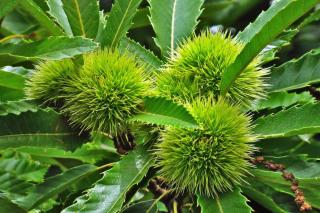 Soak the root ball in a pail of water.
Soak the root ball in a pail of water.It’s recommended to water well at the end of July, this will greatly increase the blooming in the following year. Remember to always keep adding to the layer of mulch around the trunk, it helps keep the soil cool.
Typically, softwood pruning is performed, also called greenwood pruning or summer pruning. This tends to increase bud appearance. In June, young stems are pinched at the tip to slow their growth. At the end of summer, the time has come to eliminate branches that are set too low, and those that compete with the dominant leader trunk whenever the trunk splits into a Y shape. When your tree reaches 5 years of age, simply remove branches that aren’t pointing in the right direction. The goal is to thin those away to help light penetrate to the center of the crown.
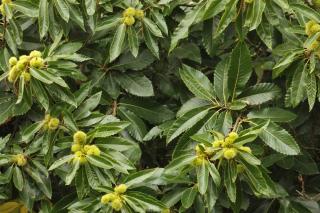
Infected trees lose their vigor, begin to wither, and in the end a dark ink-like liquid oozes from the base of the trunk. This fungus, Phytophtora cambivora, creates a black substance on roots. Once it’s infected, the tree dies within 5 to 6 years, and there is no known treatment. The solution is to use a rootstock that is known to be invulnerable to the disease, such as Castanea crenata.
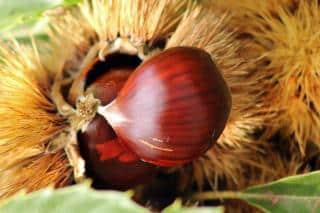
The harvest takes place from end of September to mid-November. When the hulls split open, it means they’re ready for picking. To avoid pricking your fingers, twist your foot on the hull on the ground and it’ll open up, then you can pick the fruit without hurting yourself.
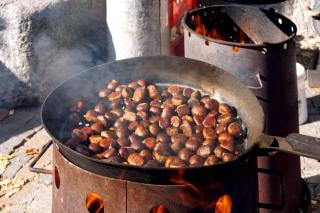 Afterwards, once you’ve gathered the harvest, you’ll have to segregate all the chestnuts with water in a pail or barrel.
Afterwards, once you’ve gathered the harvest, you’ll have to segregate all the chestnuts with water in a pail or barrel.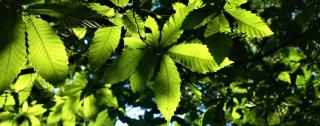 Some fruits will have turned black during the drying. Remove them and toss them out. Store all the remaining ones in crates.
Some fruits will have turned black during the drying. Remove them and toss them out. Store all the remaining ones in crates.Read also: